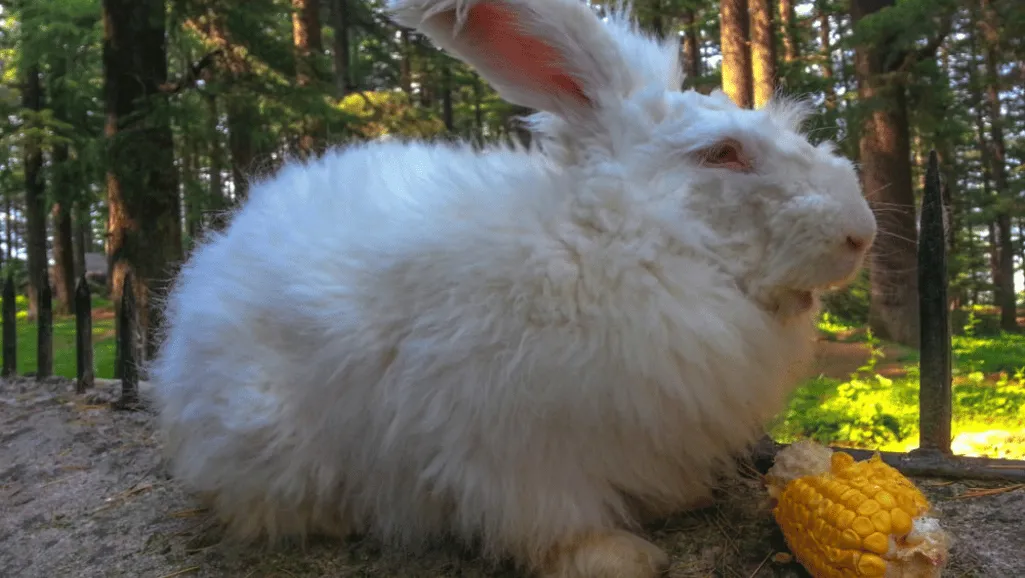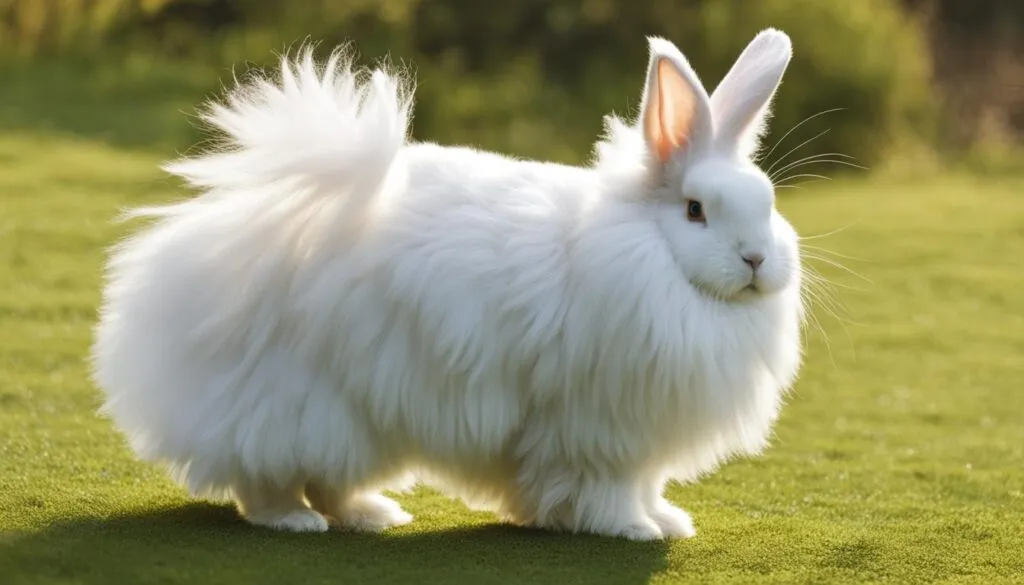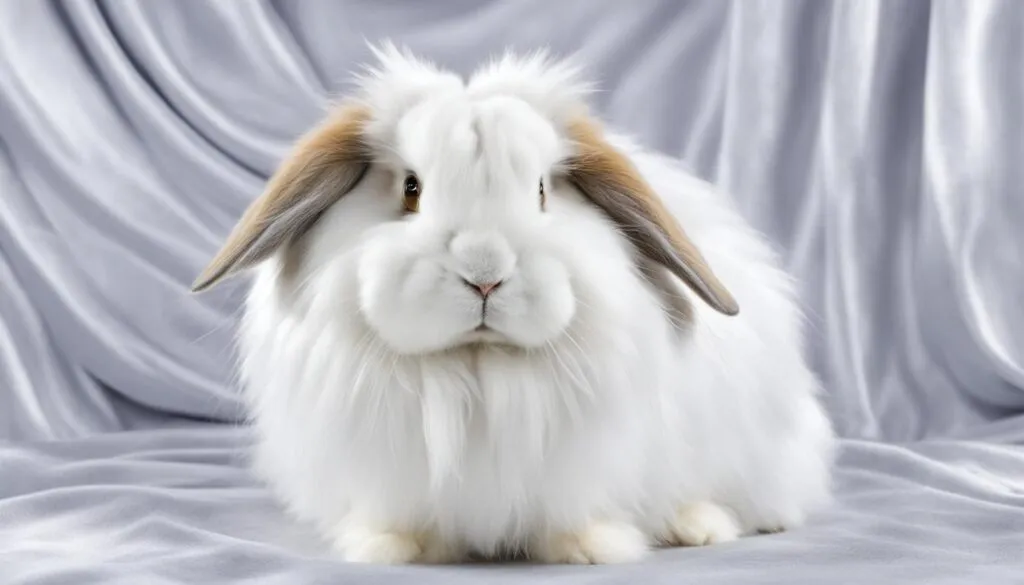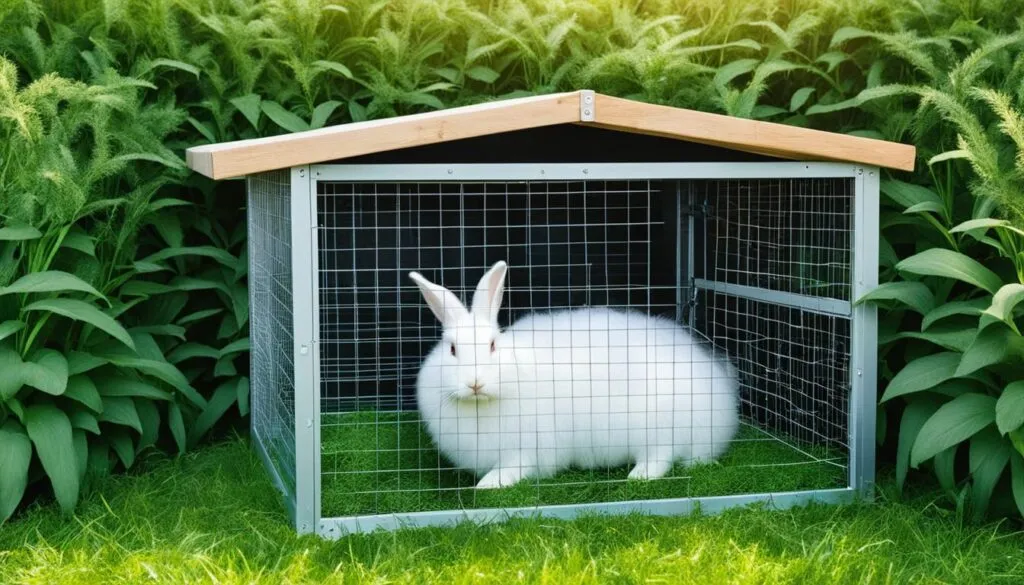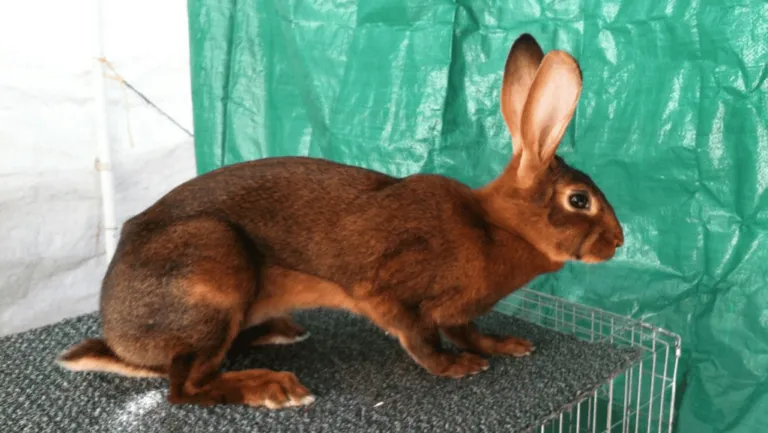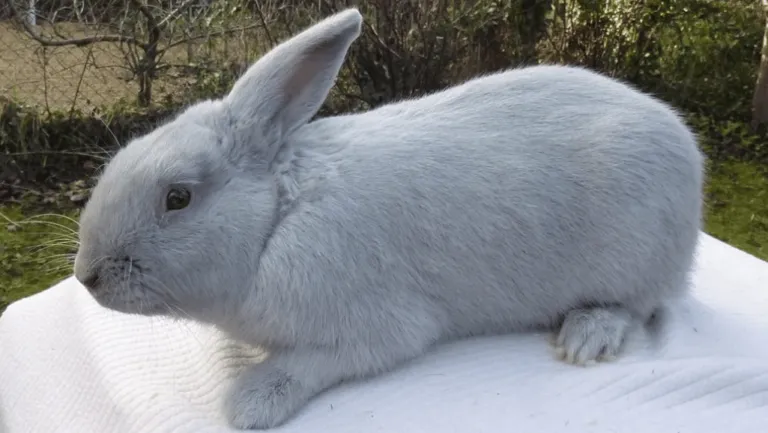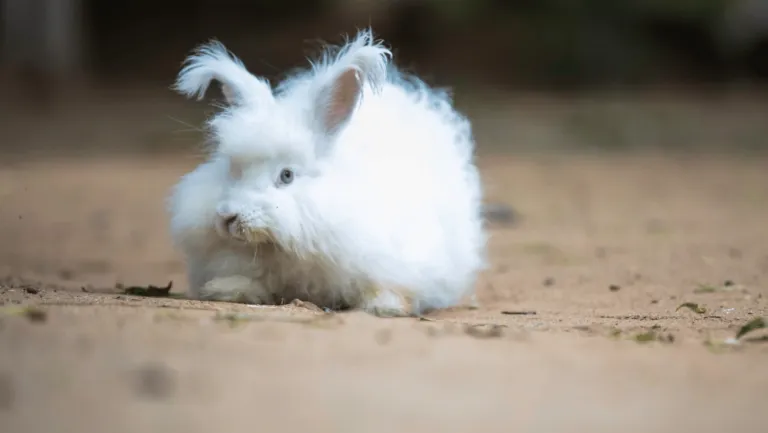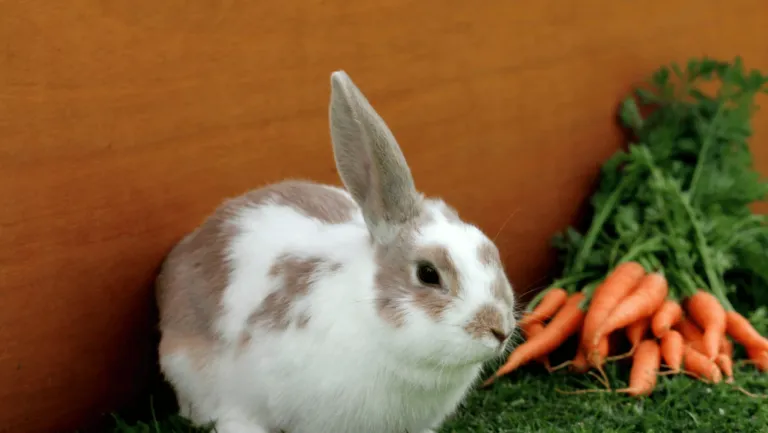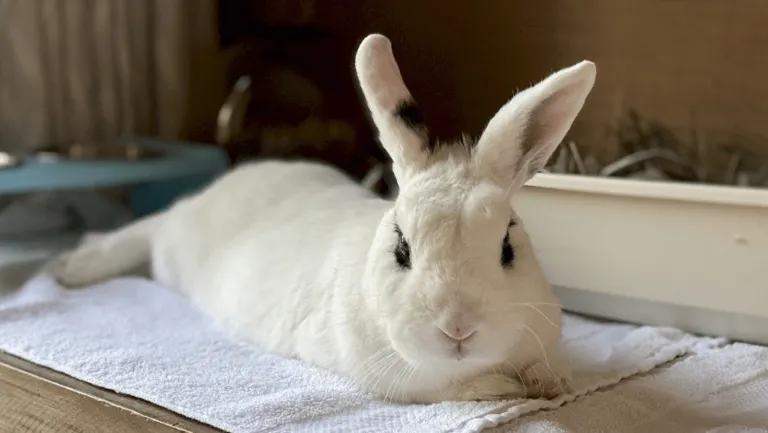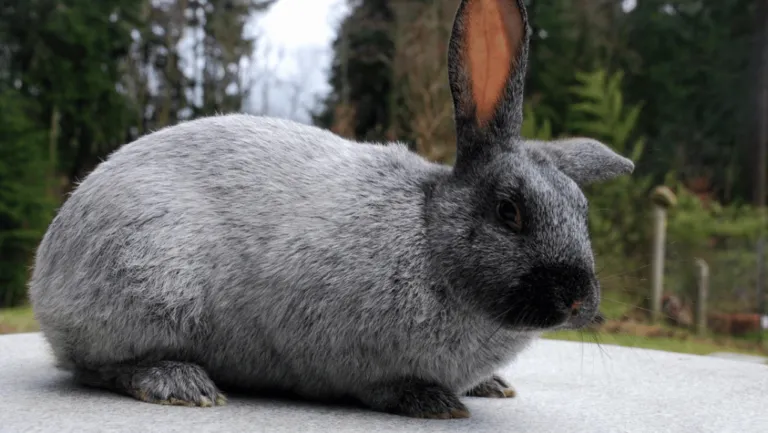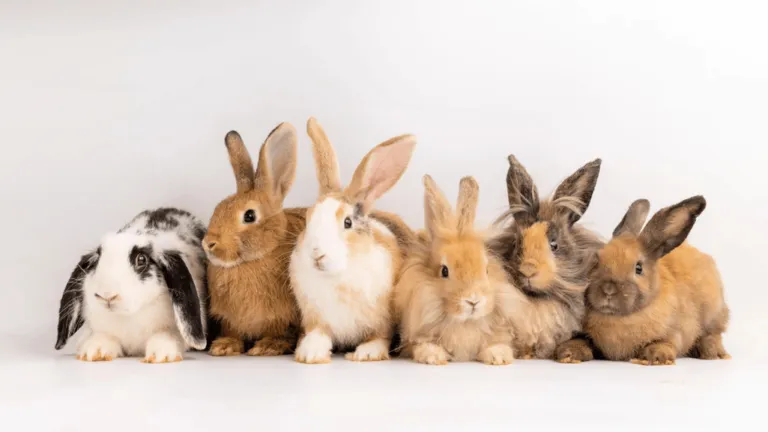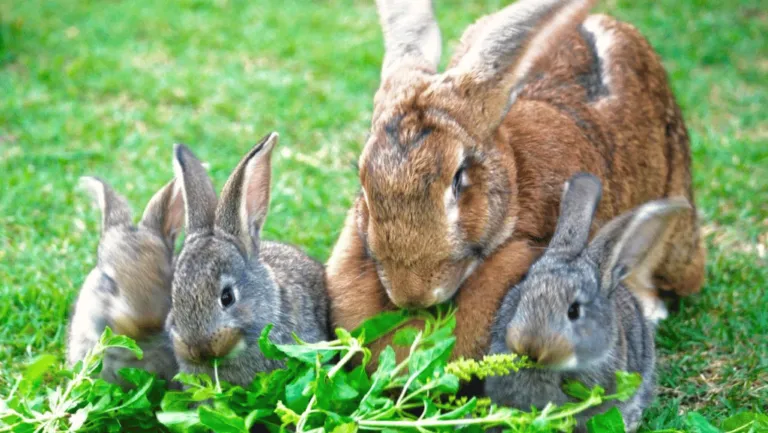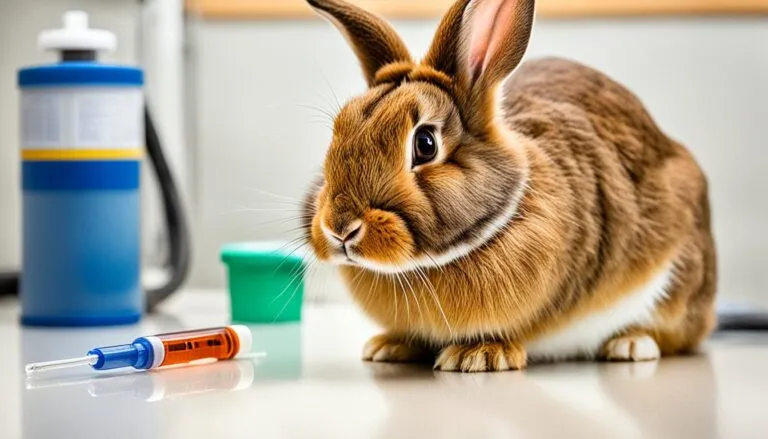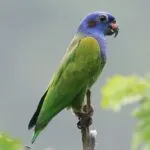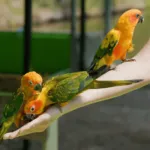The Giant Angora Rabbit is a domestic rabbit breed known for its long coat of Angora wool. This breed is one of the oldest types of domestic rabbits and is bred for its luxurious fur fiber. Angora wool is a preferred alternative to other types of wool due to its hypoallergenic properties. Giant Angora Rabbits are known for their large size and fluffy appearance, and their wool is used for various purposes. There are 11 distinct breeds of Angora rabbits, with the four recognized by the American Rabbit Breeders Association being the English Angora, French Angora, Giant Angora, and Satin Angora rabbits.
Key Takeaways:
- The Giant Angora Rabbit is a domestic rabbit breed bred for its long coat of Angora wool.
- Angora wool is preferred for its hypoallergenic properties.
- Giant Angora Rabbits are known for their large size and fluffy appearance.
- There are 11 distinct breeds of Angora rabbits, with the four recognized by the American Rabbit Breeders Association being the English Angora, French Angora, Giant Angora, and Satin Angora rabbits.
French Angora Rabbit
The French Angora Rabbit is a highly sought-after breed among rabbit enthusiasts. Known for its strong structure and thick wool, this breed is the second most popular among Angora rabbits. The French Angora’s luxurious fur can grow up to 6 inches in each season, making it an abundant source of high-quality Angora wool.
One of the remarkable features of the French Angora is its wide array of fur colors. From classic white and black to chinchilla, pearl, sable, smoke pearl, fawn, red, squirrel, chocolate, agouti, and lilac, this breed offers a diverse palette of fur colors to choose from. Each French Angora rabbit is a unique and beautiful blend of hues.
In addition to its aesthetic appeal, the French Angora rabbit is relatively low maintenance in terms of diet and grooming. This makes it an ideal choice for rabbit enthusiasts looking for a delightful companion without the burden of extensive care routines.
When it comes to grooming, regular brushing is essential to keep the French Angora’s wool in top condition. Their dense coat requires diligent attention to prevent matting or tangling. However, the reward is well worth the effort as the French Angora’s wool is prized for its softness and warmth.
Whether you’re looking for a charming pet or a source of exquisite Angora wool, the French Angora Rabbit is an excellent choice. Its striking appearance, wide range of fur colors, and low maintenance nature make it a beloved breed among rabbit enthusiasts.
Wally Angora Rabbit
The Wally Angora Rabbit, a breed belonging to the English Angora breed, is highly sought after for its cute and fluffy appearance. With ears that resemble angel wings and a majestic fur coat, Wally Angora rabbits captivate the hearts of enthusiasts around the world.
These adorable rabbits are often compared to puppies or teddy bears due to their irresistibly fluffy appearance. Their soft and luxurious fur makes them a popular choice as pets, providing endless opportunities for cuddling and companionship.
The English Angora breed, to which the Wally Angora Rabbit belongs, is known for its long, silky fiber that requires regular grooming to maintain its beauty and health. This breed originated in England and has been cherished for centuries for its remarkable wool production.
If you’re looking for a pet that combines charm and elegance with a remarkably fluffy appearance, the Wally Angora Rabbit is an excellent choice. Whether you want a loyal companion or simply want to experience the joy of nurturing a magnificent creature, the Wally Angora Rabbit is sure to bring warmth and happiness to your home.
Why Choose a Wally Angora Rabbit as a Pet?
- The Wally Angora Rabbit has a cute and fluffy appearance reminiscent of puppies or teddy bears.
- The English Angora breed’s long and silky fiber makes them highly sought after for their wool.
- These rabbits are known for their affectionate and gentle nature, making them ideal companions for individuals and families.
- Regular grooming sessions can be a bonding experience and an opportunity to pamper and care for your Wally Angora Rabbit.
- The presence of an Angora rabbit in your home adds a touch of elegance and charm to your living space.
Whether you’re an experienced rabbit owner or considering getting a pet for the first time, welcoming a Wally Angora Rabbit into your life will undoubtedly bring joy, companionship, and a delightful touch of fluffiness to your everyday routine.
English Angora Rabbit
The English Angora Rabbit is a delightful small breed known for its beautiful facial fur and thick, soft fur covering its body. Unlike other Angora rabbits, the English Angora is the only breed that displays facial fur, adding to its charm and unique appearance. This breed’s facial fur, combined with its overall woolly coat, requires regular grooming to keep it clean and tangle-free.
The English Angora Rabbit is cherished not only for its distinctive fur but also for its gentle and affectionate nature. It is known to be calm and docile, making it a great choice for those seeking a beloved and cuddly pet. This breed enjoys human companionship and thrives on affectionate interactions.
One of the notable features of the English Angora Rabbit is its wide array of fur colors. From stunning chestnut and chocolate hues to striking black, blue, and lilac tones, there is a wide range of options to suit every preference. This diversity in fur colors adds to the appeal and visual variety of this exceptional breed.
Grooming
- Regular grooming is essential for the English Angora Rabbit due to its abundance of wool. This breed requires brushing at least once a week to prevent matting and maintain the health and quality of its fur.
- Grooming sessions provide an opportunity to bond with your English Angora Rabbit while ensuring its coat remains clean and free from debris or tangles.
- Using a gentle brush specifically designed for long-haired rabbits, carefully remove any loose hairs and gently untangle any knots, taking care not to pull or stress the rabbit’s delicate skin.
- Trimming the fur around the eyes is also necessary to prevent any irritation or obstruction of vision.
- Regular nail trims and dental checks are also recommended to maintain the overall well-being of the English Angora Rabbit.
Fur Colors
The English Angora Rabbit boasts a stunning range of fur colors, enhancing its visual appeal. Here are some of the mesmerizing fur colors you can find in this breed:
| Fur Colors |
|---|
| Chestnut |
| Chocolate |
| Black |
| Blue |
| Chocolate Torte |
| Lilac |
Each fur color in the English Angora Rabbit breed exhibits its own distinct beauty, allowing for a vibrant and visually captivating pet companion.
This adorable image showcases the beguiling English Angora Rabbit, highlighting its facial fur and luxurious coat. The English Angora’s distinctive features make it a cherished breed among rabbit enthusiasts.
German Angora Rabbit
The German Angora Rabbit is a breed that has been selectively bred for its exceptional wool production. Similar to the English Angora, the German Angora Rabbit possesses a charming appearance with its fluffy coat and adorable features. However, what sets this breed apart is its suitability for commercial breeding due to its high wool yield. German Angora rabbits are known for their ability to produce an abundance of high-quality wool, making them a valuable asset in the wool industry.
Unlike some other Angora rabbit breeds, the German Angora Rabbit requires less frequent brushing to maintain its coat. This makes it a low-maintenance option for those who desire the benefits of Angora wool without the intensive grooming regime. Its wool is sought after for its silky texture and warmth, making it a popular choice for various woolen products.
Not only are German Angora rabbits prized for their wool production, but they also possess a sweet and gentle temperament, making them well-suited as companion animals. Their calm nature allows for easy handling and care, making them suitable pets for individuals of all ages.
German Angora Rabbit Characteristics
| Characteristics | Description |
|---|---|
| Size | Medium to large |
| Weight | Approximately 6-10 pounds |
| Coat | Luxurious and dense Angora wool |
| Colors | Various colors including white, gray, and black |
| Temperament | Sweet, gentle, and sociable |
| Maintenance | Low maintenance, requires less frequent brushing compared to other Angora breeds |
German Angora rabbits offer the perfect combination of commercial value, wool production, and low maintenance. Whether you’re a commercial breeder in search of a productive wool source or an individual looking for a delightful companion, the German Angora Rabbit is an excellent choice that ticks all the boxes.
Giant Angora Rabbit
The Giant Angora Rabbit is a breed that was created by mating German Angoras with broader commercial breeds. It has a large body with an oval-shaped head and tufts of hair on its forehead. The Giant Angora rabbits are known for their ability to produce a significant amount of wool, which is used to make clothing pieces like sweaters.
While they are low maintenance animals, they do require regular grooming to keep their wool clean. Their wool comes in a variety of colors such as grey, brown, and black, adding versatility to their production capabilities. Due to their size, Giant Angora rabbits also need a large enclosure to live comfortably.
| Features of Giant Angora Rabbits | Benefits |
|---|---|
| Large body size | Produces a significant amount of wool |
| Oval-shaped head with tufts of hair | Provides a unique and appealing appearance |
| Wide range of wool colors | Allows for diverse textile production |
| Low maintenance | Easier to care for compared to other long-haired rabbit breeds |
| Requires regular grooming | Ensures cleanliness and wool quality |
| Requires a large enclosure | Provides ample space for the rabbit’s size |
Satin Angora Rabbit
The Satin Angora Rabbit is a unique breed that combines the characteristics of the Copper Satin Doe and the French Angora. This breed is highly valued for its exquisite fur, which is specifically shaved for wool production. Known as the “fiber animal,” Satin Angora rabbits have a variety of fur colors that add to their beauty and appeal. These colors include white, grey, brown, tan, and combinations of these shades.
With its oval head and narrow muzzle, the Satin Angora rabbit has a distinctive appearance. Grooming plays a crucial role in maintaining the cleanliness and health of their fur. Regular grooming sessions not only help to keep their coat free from matting but also ensure that it remains soft and lustrous.
Grooming involves activities such as brushing, trimming, and removing any debris from the fur. This process helps to prevent tangles, matting, and skin issues. Satin Angora rabbits have delicate fur that requires gentle handling during grooming sessions. It is important to use appropriate brushes and combs specifically designed for their fur type.
Satin Angora Rabbit Grooming Tips:
- Use a wide-toothed comb or a slicker brush to remove loose fur gently.
- Avoid pulling or tugging on the fur to prevent any discomfort or injury.
- Trim the fur around the eyes and hindquarters to maintain cleanliness.
- Regularly check the nails and trim them if necessary to ensure the rabbit’s comfort.
- Provide a calm and quiet environment during grooming sessions to help the rabbit relax.
By following these grooming tips, Satin Angora rabbit owners can keep their pets looking their best while maintaining their fur’s overall health and quality.
| Fur Colors | Description |
|---|---|
| White | Pure white fur, giving the rabbit a striking and elegant appearance. |
| Grey | A mix of light and dark grey tones, creating a sophisticated and sleek look. |
| Brown | Various shades of brown, ranging from light tan to rich chocolate. |
| Tan | A warm and golden color, reminiscent of sand or caramel. |
With their stunning fur colors and meticulous grooming needs, Satin Angora rabbits are a delight to own and care for. Their soft and luxurious wool is prized in the textile industry, making them a valuable fiber animal.
Angora Rabbit Cage
Providing a suitable enclosure is crucial for the well-being of your Angora rabbits. A well-designed cage ensures their safety, comfort, and cleanliness. When choosing a cage for your Angora rabbits, consider the following factors:
Wire Cage vs. Wooden Hutches
Angora rabbits thrive in wire cages due to their easy maintenance. Wire cages provide better ventilation, prevent the accumulation of ammonia odors, and are resistant to moisture. Cleaning wire cages is also more convenient as waste falls through the wire floor, keeping the rabbits’ living space hygienic. On the other hand, wooden hutches can absorb moisture, which can lead to unpleasant odors and damage to the wood over time.
Optimal Cage Size
Ensure that the cage you choose is large enough for your Angora rabbits to move around comfortably. A spacious cage allows them to exercise, stretch their legs, and exhibit natural behaviors. The recommended minimum size for an Angora rabbit cage is 30 inches in width, 36 inches in length, and 24 inches in height. However, providing a larger cage gives your rabbits even more room to explore and keeps them happier and healthier.
Protecting the Cage
During the summer months, it’s important to protect the wire cage from excessive heat and direct sunlight. Place the cage in a shady area or provide a cover to prevent discomfort and heat-related health issues. Additionally, ensure that the cage is well-ventilated to avoid heat buildup.
If you’re looking to purchase an Angora rabbit cage, there are various options available. Retailers and online pet shops offer a wide range of cages suitable for different rabbit breeds and sizes. Take into consideration the specific needs of your Angora rabbits when selecting a cage and prioritize their comfort and well-being.
Angora Rabbit Hutch
Providing a comfortable housing for Angora rabbits is essential for their well-being and overall health. A spacious and user-friendly hutch is highly recommended to ensure their comfort and happiness. An Angora Rabbit Hutch should have enough space for the rabbit to move around, stretch its legs, and exhibit natural behaviors.
When selecting an Angora Rabbit Hutch, consider the following factors:
- Size: Choose a hutch that provides ample space for the rabbit to hop, jump, and stand on its hind legs. The ideal hutch size for an Angora rabbit should be at least 4 to 6 square feet of living space.
- Comfort: The hutch should have a soft and cozy sleeping area where the rabbit can rest comfortably. Provide a clean and dry bedding material, such as straw or hay, for extra comfort.
- Accessibility: Ensure that the hutch is designed with easy access to the rabbit’s food and water, as well as their litter area. This will make it convenient for both you and your pet.
- Ventilation: Proper ventilation is crucial to maintain a fresh and healthy environment inside the hutch. Make sure there are adequate ventilation holes or slats for air circulation.
- Durability: Choose a hutch made from sturdy materials that can withstand weather conditions and resist chewing or scratching. This will ensure the hutch lasts for a long time.
Regular cleaning of the Angora Rabbit Hutch is essential to prevent the discomfort caused by shedding fur and minimize the stacking of wool. The accumulated fur can cause matting and tangling, leading to potential health issues for the rabbit.
Here are some tips for cleaning the hutch:
- Remove any uneaten food, soiled bedding, and droppings daily.
- Thoroughly clean the hutch at least once a week using mild soap or a pet-friendly disinfectant. Rinse off all soap residue and ensure the hutch is completely dry before putting the rabbit back inside.
- Regularly groom your Angora rabbit to prevent excessive shedding and reduce the chances of wool stacking. Brushing their fur gently can help remove loose hairs and maintain their coat’s health and appearance.
Keeping the Angora Rabbit Hutch clean and maintaining proper hygiene is crucial for the rabbit’s well-being. It provides them with a comfortable living space and reduces the risk of health problems caused by unclean conditions.
A clean and well-maintained hutch ensures a happy and healthy environment for your beloved Angora rabbit.
Angora Rabbit Food Care
Proper nutrition is vital for the health and well-being of Angora rabbits. To ensure they receive the necessary nutrients, it is important to provide them with a well-balanced diet.
Diet Composition
An ideal diet for Angora rabbits consists of 70% hay, which serves as the main source of fiber. The remaining 30% should include a variety of fruits and vegetables to provide essential vitamins and minerals. This combination ensures they receive the necessary proteins, carbohydrates, and other nutrients.
Fruits such as apples, berries, and melons can be given as occasional treats. Vegetables like carrots, leafy greens (such as lettuce and spinach), and bell peppers are excellent choices as they contribute to overall nutrition.
Avoid Wool Ingestion
It is important to take preventive measures to avoid the ingestion of their own wool. Rabbits, especially Angoras, may accidentally consume wool while grooming themselves, which can lead to digestive issues such as wool block. To prevent this, regular grooming sessions and maintaining a clean enclosure are essential. Remove loose wool from the cage to minimize the risk of wool consumption.
Remember to provide fresh, clean water at all times to keep your Angora rabbit hydrated.
Introducing New Foods
When introducing new foods to your Angora rabbit’s diet, it is advisable to do so gradually. Start with small portions and observe any adverse reactions. If your rabbit experiences digestive issues or changes in stool consistency, consult a veterinarian for appropriate guidance.
It’s important to note that some fruits and vegetables, such as avocado, onion, and rhubarb, can be toxic to rabbits. Always research or consult with a veterinarian to ensure the safety of the food you provide.
Dietary Considerations
Angora rabbits have specific dietary needs, and the right balance of hay, fruits, and vegetables is essential for their overall health. The high fiber content in hay promotes proper digestion and helps prevent dental issues, such as overgrown teeth.
Optimal nutrition not only supports their physical well-being but can also contribute to the quality of their wool. A well-fed Angora rabbit will have healthier fur, which results in better wool production.
| Recommended Foods for Angora Rabbits | |
|---|---|
| Hay | 70% of the diet |
| Fruits | Occasional treats |
| Vegetables | Part of the 30% diet |
Conclusion
After exploring the fascinating world of Giant Angora Rabbits, it is clear that this breed offers a combination of affordability, charm, and versatility. As an affordable breed, Giant Angora Rabbits make for adorable pets that can bring joy and companionship to any household. While they do require some maintenance, the costs associated with their care are manageable.
One of the standout features of the Giant Angora Rabbit is its wool production, making it popular for commercial purposes. The soft and luxurious Angora wool can be used to create a variety of products, including the popular Angora rabbit sweaters. These sweaters can be easily purchased from local markets, allowing individuals to enjoy the warmth and comfort of this unique fiber.
In terms of pet adoption, the Giant Angora Rabbit is an excellent choice for those seeking a furry companion. Their adorable appearance and friendly nature make them a joy to have around. Whether you’re looking for a pet or considering the breed for commercial purposes, the Giant Angora Rabbit offers the perfect combination of wool production and companionship.
Frequently Asked Questions
What is the Giant Angora Rabbit breed known for?
The Giant Angora Rabbit is known for its long coat of Angora wool.
How many breeds of Angora rabbits are there?
There are 11 distinct breeds of Angora rabbits.
What are the four recognized Angora rabbit breeds by the American Rabbit Breeders Association?
The four recognized Angora rabbit breeds are the English Angora, French Angora, Giant Angora, and Satin Angora rabbits.
What is the French Angora Rabbit known for?
The French Angora Rabbit is known for its strong structure and thick wool that can grow up to 6 inches in length.
What are some fur colors of the French Angora Rabbit?
The French Angora Rabbit comes in a variety of fur colors, including white, black, chinchilla, pearl, sable, smoke pearl, fawn, red, squirrel, chocolate, agouti, and lilac.
What makes the Wally Angora Rabbit popular as a pet?
The Wally Angora Rabbit is popular as a pet due to its cute and fluffy appearance, resembling puppies or teddy bears.
What unique feature does the English Angora Rabbit have?
The English Angora Rabbit is the only breed with facial fur.
What are some fur colors of the English Angora Rabbit?
The English Angora Rabbit comes in a variety of fur colors, including chestnut, chocolate, black, blue, chocolate torte, and lilac.
What is the German Angora Rabbit bred for?
The German Angora Rabbit was selectively bred for commercial purposes and is known for its high wool production.
How does the Giant Angora Rabbit differ from the German Angora?
The Giant Angora Rabbit was created by mating German Angoras with broader commercial breeds and has a larger size and oval-shaped head.
What do Satin Angora Rabbits produce?
Satin Angora Rabbits are known as “fiber animals” and their fur is specifically shaved for wool production.
What are some fur colors of the Satin Angora Rabbit?
The Satin Angora Rabbit comes in various fur colors, such as white, grey, brown, tan, and combinations of these colors.
What type of housing is recommended for Angora rabbits?
Wire cages are recommended for Angora rabbits as they are easier to clean than wooden hutches.
How should an Angora rabbit cage be protected during summers?
It is important to protect the wire cage from heat and moisture during summers.
What should be considered when choosing an Angora rabbit hutch?
An Angora rabbit hutch should be user-friendly, easy to clean, and should prevent wool stacking.
What is the recommended diet for Angora rabbits?
Angora rabbits require a diet consisting of 70% hay and 30% fruits and vegetables.
Why is regular cleaning of an Angora rabbit cage important?
Regular cleaning helps prevent discomfort caused by shed fur and keeps the rabbits’ environment clean.
Are Angora rabbits low maintenance pets?
Yes, Angora rabbits, such as the Giant Angora, German Angora, and French Angora, are considered low maintenance pets.

